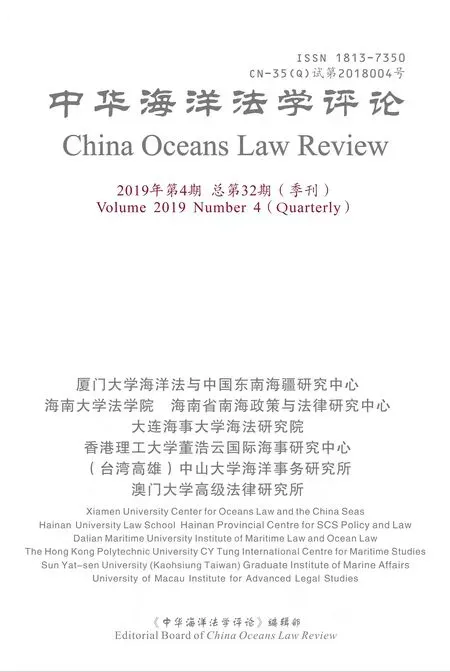Emissions Gap Report 2019
[United Nations Environment Programme (2019).Nairobi.]
1.Introduction
Authors:Anne Olhoff (UNEP DTU Partnership)and John Christensen (UNEP DTU Partnership)
This tenth edition of the United Nations Environment Programme (UNEP)Emissions Gap Report provides an independent scientific assessment of how countries’ climate pledges and actions are affecting the global greenhouse gas emissions (GHG)trend,comparing it with the emission reductions necessary to limit global warming to well below 2°C and 1.5°C in accordance with the Paris Agreement.This difference between where we are likely to be by 2030 and where we need to be has become known as the ‘emissions gap’.
To mark the 10-year anniversary,a publication summarizing the lessons from a decade of emissions gap assessments (Christensen and Olhoff 2019)was published to support the United Nations Secretary-General’s Climate Action Summit in September 2019.This publication shows that despite a decade of increased focus on climate change,global GHG emissions have not been curbed and the emissions gap is now larger than ever.It is clear that the world cannot afford another decade lost.Unless mitigation action and ambition are increased immediately and profoundly through enhanced nationally determined contributions (NDCs)and supported by ambitious long-term mitigation strategies,it will not be possible to avoid exceeding the 1.5°C goal,and it will become increasingly challenging to achieve the well below 2°C goal.
At the Climate Action Summit,countries and regions announced their intention to improve national and subnational action.For example,70 countries agreed to submit enhanced NDCs by 2020,with the number of commitments to zero GHG and carbon emission targets at some point during the second half of this century increasing from around 20 countries and eight regions before the Summit to 71 countries and 11 regions after the Summit.However,these countries and regions account for just 15 per cent of global emissions,indicating that the scale and pace of climate commitments and action is still far from what is required to keep the Paris Agreement goals within reach.
The challenge for the twenty-fifth session of the Conference of the Parties(COP 25)to the United Nations Framework Convention on Climate Change(UNFCCC)and the year to follow is thus to bring about the necessary move from incremental to transformational climate ambition and action.The year 2020,which is when countries are requested to submit new or updated NDCs and invited to communicate long-term mitigation strategies as part of the UNFCCC process,will be defining in this regard.
As in previous years,this Emissions Gap Report has been prepared by an international team comprising 57 leading scientists from 33 expert institutions across 25 countries,assessing all available information,including that published in the context of the Intergovernmental Panel on Climate Change (IPCC)special reports.The assessment process has been overseen by a distinguished steering committee and has been transparent and participatory.The assessment methodology and preliminary findings were made available to the governments of the countries specifically mentioned in the report to provide them with the opportunity to comment on the findings.
The report is organized into seven chapters,including this introduction,and is structured on the questions that guided the 2018 Talanoa Dialogue:Where are we?Where do we want to go? How do we get there? In this way,chapter 2 focuses on where we are,providing an updated assessment of the status and trends of current and projected global GHG emissions,and the progress of G20 members towards their Cancun Pledges for 2020 and their NDC targets for 2030.
Addressing the issue of where we want to go and comparing it with where we are likely to be,chapter 3 assesses what the gap between estimated global emissions will be by 2030 if NDCs are fully implemented,as well as the range consistent with the well below 2°C and 1.5°C temperature goals.The chapter also considers what the temperature implications will be at the end of the century if current policies are continued,and whether global emissions by 2030 will be permissible if the current level of ambition of NDCs is not increased.
Finally,the second part of the report examines how the gap can be bridged.Chapter 4 provides a comprehensive overview of recent ambitious climate actions by national and subnational governments as well as non-state actors,and a detailed overview of policy progress and opportunities for enhanced mitigation ambition for selected G20 members.With the aim of informing the Climate Action Summit and the preparation of new and updated NDCs,a special prerelease version of chapter 4 was published in time for the Summit.The chapter illustrates that collectively,the G20 members have not yet taken on transformative commitments at the breadth and scale necessary,highlighting that despite many positive developments,commitments are still far from what is required.Chapter 5 details the key transformations that are needed to align global trends with the Paris Agreement goals and how such transformational pathways in many cases can be synergistic with achieving other development priorities,including the Sustainable Development Goals (SDGs).Global transformation of energy systems is crucial for bridging the emissions gap.Chapter 6 reviews five transition options that are relevant for many countries,can be designed to achieve development and mitigation goals simultaneously and are associated with significant emission reduction potentials.Finally,chapter 7 assesses how material efficiency strategies for residential buildings and cars can contribute to bridging the gap.
The full text of the report is available at https://wedocs.unep.org/bitstream/handle/20.500.11822/30797/EGR2019.pdf?sequence=1&isAllowed=y.
- 中華海洋法學(xué)評(píng)論的其它文章
- 2016 南海仲裁案仲裁庭對(duì)中國(guó)南海歷史性權(quán)利的錯(cuò)誤認(rèn)定(下)
- Misattribution of China’s Historic Rights to the South China Sea by the 2016 South China Sea Arbitration Tribunal (Part II)
- 海洋生態(tài)環(huán)境保護(hù)的刑事規(guī)制
——基于Y 市污染環(huán)境罪的司法實(shí)踐 - On Criminal Regulations for Marine Ecological Environment Protection:Based on the Judicial Practice of the Crime of Environmental Pollution in City Y
- 無人船的法律地位研究
- On the Legal Status of Unmanned Ships

